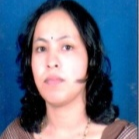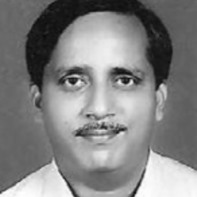International Journal of Image, Graphics and Signal Processing (IJIGSP)
IJIGSP Vol. 6, No. 9, 8 Aug. 2014
Cover page and Table of Contents: PDF (size: 699KB)
Reliable Devanagri Handwritten Numeral Recognition using Multiple Classifier and Flexible Zoning Approach
Full Text (PDF, 699KB), PP.61-68
Views: 0 Downloads: 0
Author(s)
Index Terms
Devanagri Numeral Recognition, KNN, Chain Code, Classifier combination, Features
Abstract
A reliability evaluation system for the recognition of Devanagri Numerals is proposed in this paper. Reliability of classification is very important in applications of optical character recognition. As we know that the outliers and ambiguity may affect the performance of recognition system, a rejection measure must be there for the reliable recognition of the pattern. For each character image pre-processing steps like normalization, binarization, noise removal and boundary extraction is performed. After calculating the bounding box features are extracted for each partition of the numeral image. Features are calculated on three different zoning methods. Directional feature is considered which is obtained using chain code and gradient direction quantization of the orientations. The Zoning firstly, is considered made up of uniform partitions and secondly of non-uniform compartments based on the density of the pixels. For classification 1-nearest neighbor based classifier, quadratic bayes classifier and linear bayes classifier are chosen as base classifier. The base classifiers are combined using four decision combination rules namely maximum, Median, Average and Majority Voting. The framework is used to test the reliability of recognition system against ambiguity.
Cite This Paper
Pratibha Singh, Ajay Verma, Narendra S. Chaudhari,"Reliable Devanagri Handwritten Numeral Recognition using Multiple Classifier and Flexible Zoning Approach", IJIGSP, vol.6, no.9, pp. 61-68, 2014. DOI: 10.5815/ijigsp.2014.09.08
Reference
[1]L. Bottou, Y. Bengio, and P. Haffner Y. LeCun, "Gradient-based learning applied to document recognition," in Proceedings of the IEEE, 86(11):, November 1998., pp. 2278–2324.
[2]Farshid Solimanpour, Javad Sadri, and Ching Y. Suen, "Standard Databases for Recognition of Handwritten Digits, Numerical Strings, Legal Amounts, Letters and Dates in Farsi Language," in Tenth International workshop on Frontiers in handwriting recognition, 2006.
[3]I.K. Sethi, "Machine Recognition of Online Handwritten Devnagari Characters.," Pattern Recognition, Vol. 9, pp. 69 - 75, 1977.
[4]L. Dey, and S. Chaudhury, R. Bajaj, "Devnagari numeral recognition by combining decision of multiple connectionist classifiers," Sadhana, vol. 27, pp. 59-72, 2002.
[5]M. Hanmandlu and O.V. Ramana Murthy, "Fuzzy model based recognition of handwritten numerals," Pattern Recognition, vol. 40, pp. 1840-1854, 2007.
[6]Ved Prakash Agnihotri, "Offline Handwritten Devanagari Script Recognition," I.J. Information Technology and Computer Science, MECS Press, vol. V-4, pp. 37-42, July 2012.
[7]M. Govindarajan, "Evaluation of Ensemble classifiers for Handwriting Recognition," International Journal of Modern Education and Computer Science, vol. 11, pp. 11-20, November 2013.
[8]Nikolai Gorski, "Optimizing Error-Reject Trade off in Recognition Systems," in Fourth International conference on Document Analysis and Recognition, 1997, pp. 1092-1096.
[9]B.B. Chaudhuri Ujjwal Bhattacharya, "Handwritten Numeral Databases ofIndian Scripts and Multistage Recognitionof Mixed Numerals," IEEE Transactions on Pattern Analysis And Machine Intelligence, vol. 31, no. 3, pp. 444-457, March 2009.
[10]A. Kawamura et al., "On-Line Recognition of Freely Handwritten Japanese Characters Using Directional Feature Densities," in 11th IAPR conference in Pattern Recognition Methodology and systems, 1992, pp. 183-186.
[11]T. M. Cover and P. E. Hart, "Nearest neighbor pattern classification," IEEE Trans. Inform. Theory, vol. vol. IT-13, pp. 21–27, , 1967.
[12]T., Hart, P. Cover, "Nearest neighbor pattern classification," IEEE Transactions on Information Theory, 13(1): 21–7., pp. 7-21, (1967),.
[13]R.P.W. Duin, "PRTools 3.0, A Matlab Toolbox for Pattern Recognition, Delft University of Technology,.," 2000.
[14]A. Krzyzak, and C.Y. Suen L. Xu, "Methods of combining multiple classifiers and their application to handwriting recognition," IEEE Trans. SMC vol.22, pp. 418--435, 1992.
[15]R.E. Schapire, "The strenght of weak learnability,.," Machine Learning, vol. 5, pp. 197-227, 1990.
[16]U. Pal, F. Kimura and S. Pal N. Sharma, "Recognition of Off-Line Handwritten Devnagari Characters Using Quadratic Classifier," in ICVGIP 2006, LNCS 4338, pp. Springer-Verlag Berlin, Heidelberg, 2006, pp. 805 – 816.


